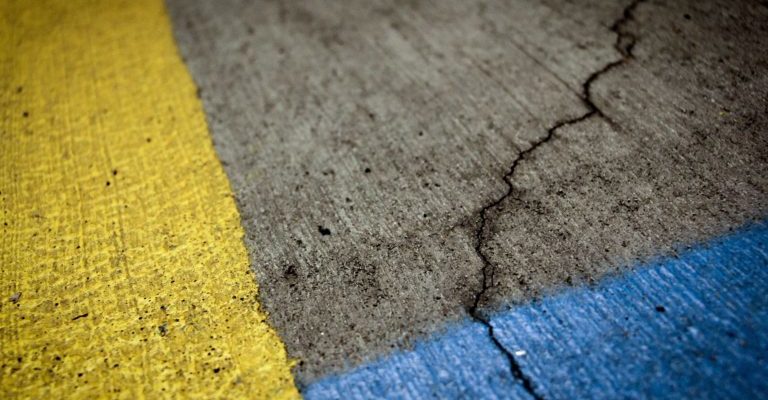- 0 Like
- 0 Comments
- By admin
- Asphalt Paving
Several different types of asphalt cracks can develop in asphalt pavements. Some cracks are load-related, and some are attributable to temperature or environment. Fatigue cracking is caused by load-related deterioration resulting from a weakened base course or subgrade, too little pavement thickness, overloading, or a combination of these factors. Block cracking is a series of large (typically one foot or more), rectangular cracks on an asphalt pavement ½s surface. This type of cracking typically covers large areas and may occur in areas where there is no traffic. Block cracking is typically caused by shrinkage of the asphalt pavement due to temperature cycles.
Distortions in asphalt pavement are caused by instability of an asphalt mix or weakness of the base or subgrade layers. These distresses may include rutting, shoving, depressions, swelling and patch failures. Rutting is a linear, surface depression in the wheel path. Rutting is caused by deformation or consolidation of any of the pavement layers or subgrade. It can be caused by insufficient pavement thickness, lack of compaction, and weak asphalt mixtures. Shoving is the formation of ripples across a pavement. This characteristic shape is why this type of distress is sometimes called wash-boarding. Shoving occurs at locations having severe horizontal stresses, such as intersections. It is typically caused by excess asphalt; too much fine aggregate; rounded aggregate; too soft an asphalt; or a weak granular base.
Disintegration is the breakup of a pavement into small pieces that are lost with time and traffic. Raveling and potholes are the most common types of disintegration. Raveling is the wearing away of the aggregate particles from the asphalt cement. This condition indicates that the asphalt has hardened or that a poor-quality mixture was used. Raveling occurs in the presence of traffic.
Loss of Cover Aggregate
Surface treatments can lose the aggregate cover prematurely. Typically, this is caused by: spreading the chips too late in the construction process; using a dirty aggregate; allowing traffic to use the surface before the aggregate is seated and bonded; or applying too little asphalt to embed the aggregate. Streaking is the presence of alternating stripes of aggregate or asphalt. Streaking is primarily caused by the uneven application of the asphalt to the pavement surface before the aggregate chips are applied.
The industrial and commercial asphalt world is always changing. Please like this article, share this article, or visit us at https://arnoldasphalt.com.

